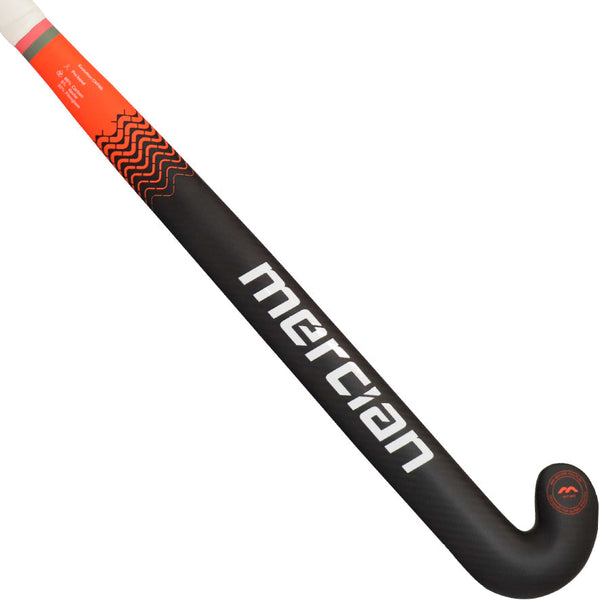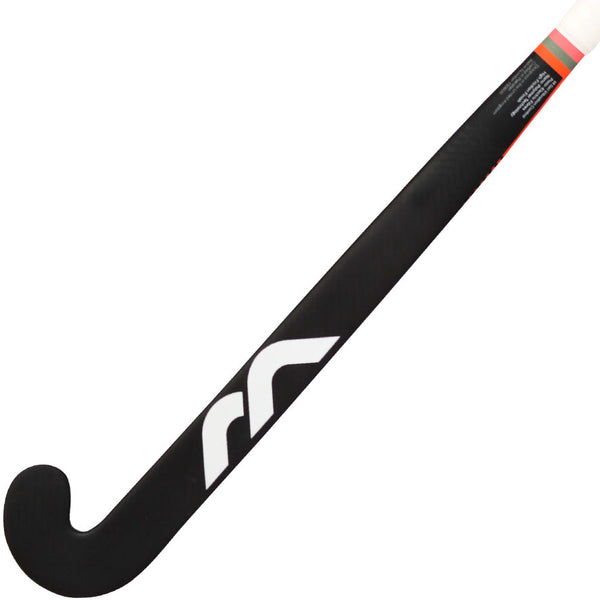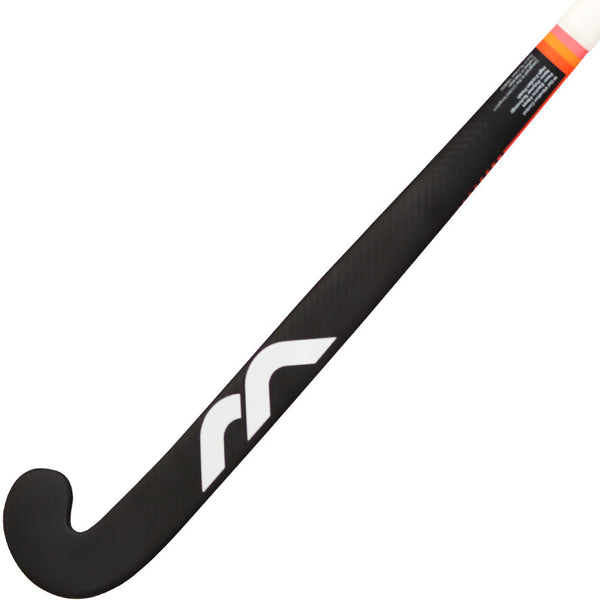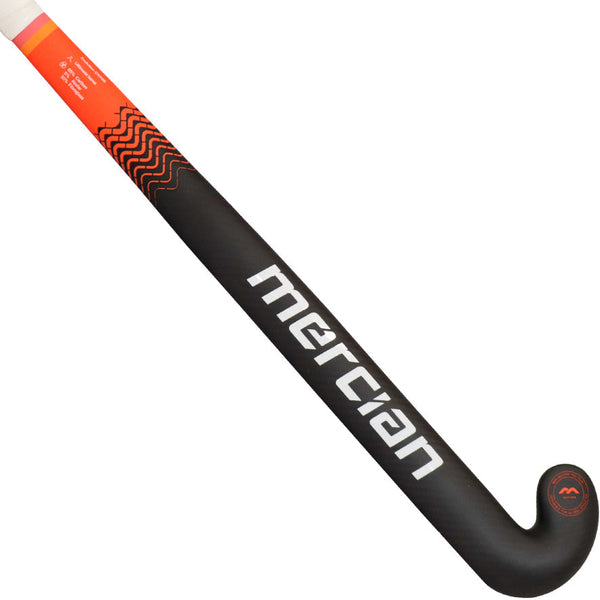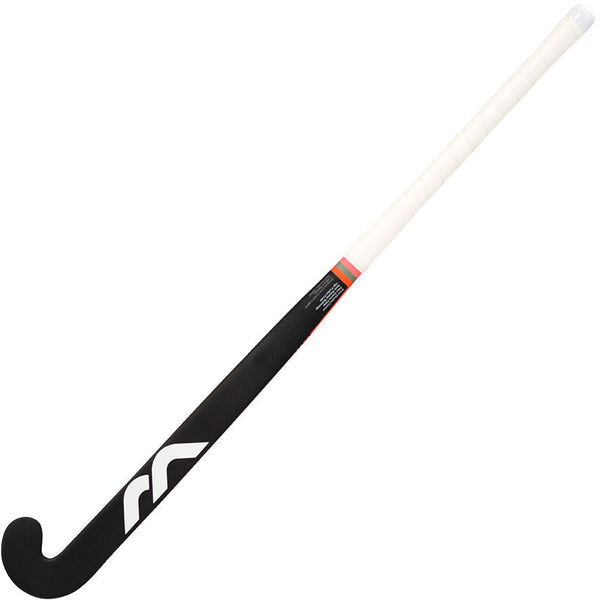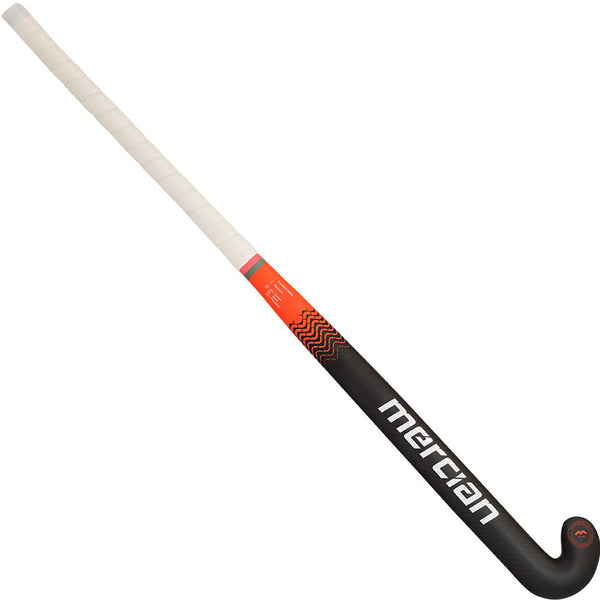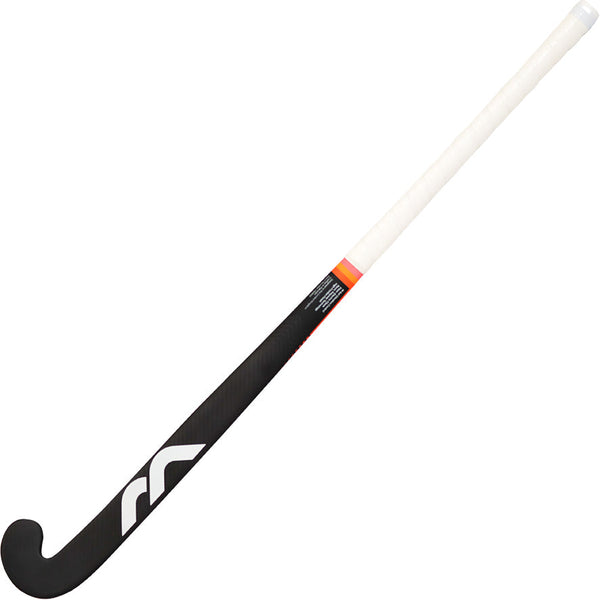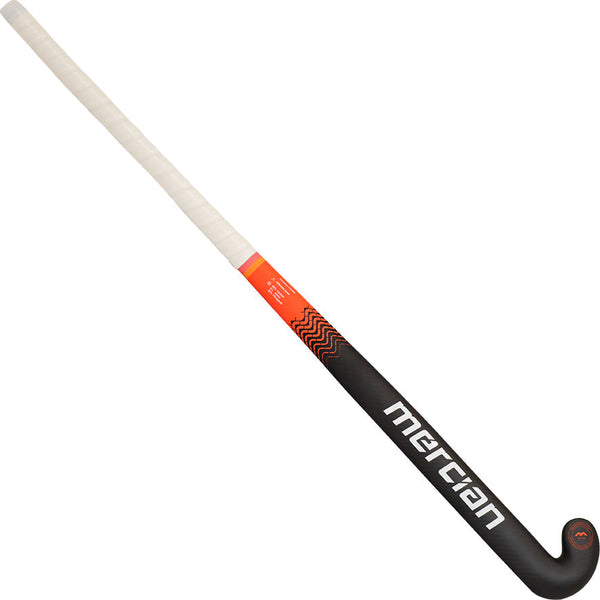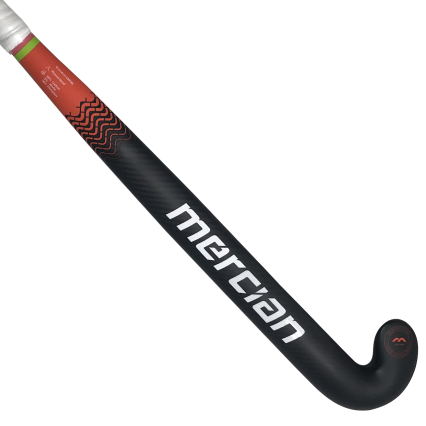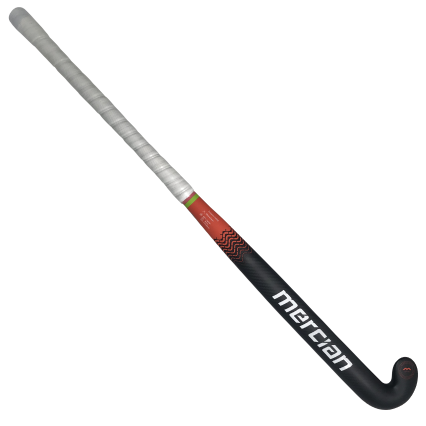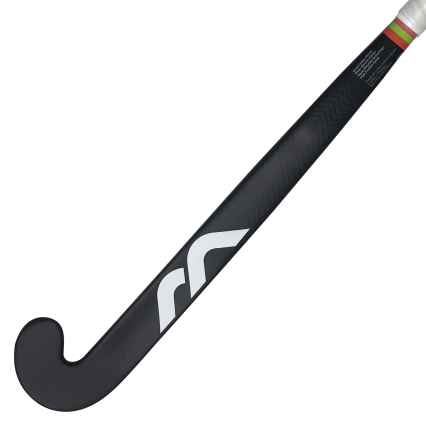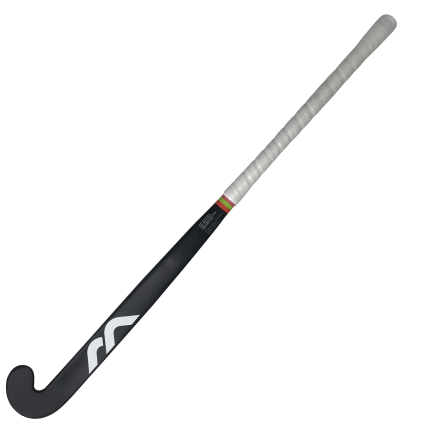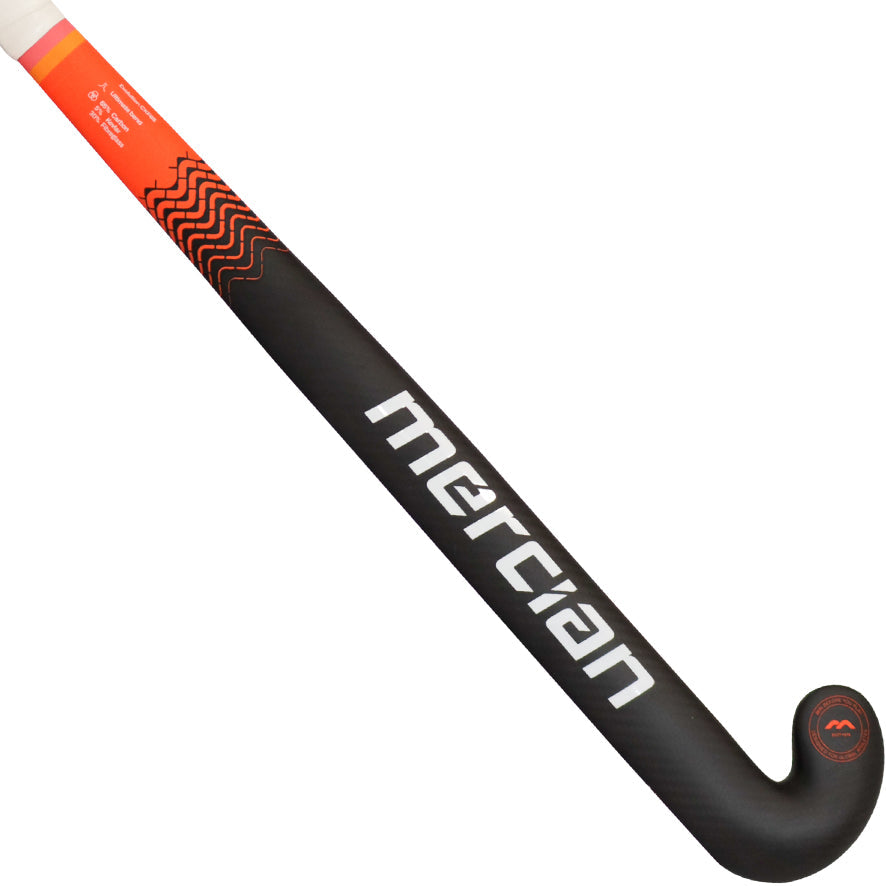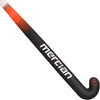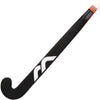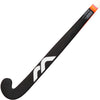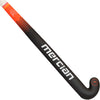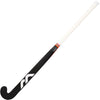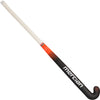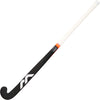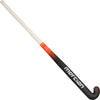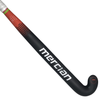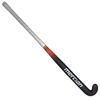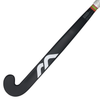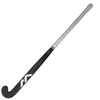Mercian Evolution CKF65
- Description
- Technical Details
- Player Profile
The Evolution CKF65 is a 65% carbon lay-up model with the high-quality Toray carbon placed in multi-direction laminate sheets (creates strength in all directions) across a (25%) fibreglass skeleton and with integrated fibreglass laminates giving great touch and feel with the (10%) Kevlar increasing durability, stiffness and laminate bonding. This model is available in the aggressive Ultimate (extreme) low ned model and the less aggressive Pro (low) bend (24mm @ 230mm)
- 65% Carbon
- Ultimate (Extreme) Low Bend (24.5mm @ 200mm) / Pro (low) bend (24mm @ 230mm)
- Dual-process vibration control (Peizo-Electric fibres, M-Gel)
- Nano-Polymer Resin
- High Friction Face
- Cold Touch Lacquer
CARBON FIBRE
One of the most common questions asked by the consumer is ‘how much carbon?’ with the perception that more is better. That is far from the truth, so to shed a little light. Firstly the quality of carbon (manufacturing point) is important. Toray (Japanese) Carbon is often considered the best, but Carbon from Germany, Scotland and South Africa (to name a few) are all high-quality. Sticks are usually made in Pakistan and most major brands will import Carbon into Pakistan to make sticks. Local made carbon is not usually as good. But it is difficult to know if a brand uses imported carbon. The number of filaments in the carbon fibre is relevant, 1K, 3K etc relate to the number of filaments of pure carbon within a fibre or ‘tow’. 1K is used in aeronautical industry and electronics. 3K and 6K are commonly used in sport as they have the right combination of weight and strength. Anything over 6K is very dense and too heavy for sports equipment. Again this isn’t a common line of questioning from the consumer but may come up. Carbon fibres are a straight line material and so provide stiffness in a single direction. To provide stiffness in multiple directions the fibre can be woven into a multi-directional sheet (seen as an obvious weave in the sticks surface) or single direction sheets can be layered over each other to create the multi-directional stiffness. 40% of the weight of a composite stick comes from the resin within it. So a stick can’t be 100% carbon. However it can be claimed that 100% of the composite materials in a stick are carbon. Mercian do not believe this gives optimal strength and so always combine the carbon overlay with a composite micro-skeleton made from fibreglass, Kevlar (aramid) and basalt. Carbon is stiff but brittle. The stiffness means that the energy created by the player when striking the ball – hit / slap – transfers to the ball and is not absorbed by the stick. Maximum energy transfer allowed by the FIH is 98%. But this stiffness means that the stick will not absorb energy on trapping / receiving so needs soft hands! The brittleness of carbon means that if the fibres are broken (stick tackle / post impact) they will crack and the stick can or will fail. This is not a manufacturing fault. Other materials can be used in conjunction with carbon to get a positive performance outcome. Special chemicals are used with paints and lacquers to get them to bend to the top layer of carbon and create high-quality graphics.
FIBREGLASS
The fibreglass described within any stick is exactly that, very fine (thin) glass fibres / filaments. Multiple filaments are combined to create a thicker fibre. This is then unwound from a spool (like a big cotton reel), dipped in a resin to make them super sticky and then laid out on a release paper (like grease-proof backing paper) to create single directional sheets of fibreglass. These sheets are then cut into smaller pieces and layered at different angles to create strength in multiple directions. Whilst fibreglass is strong, it is not as brittle as carbon and therefore forms a fantastic base (micro-skeleton) which absorbs some energy because of its flexibility and over which the Carbon, Kevlar and Basalt can be layered to create high end performance sticks. In our (Mercian) opinion, sticks perform better with a non-carbon base skeleton.
TCDK (tungsten carbide diffused Kevlar)
Kevlar is the registered trademark for a para-aramid synthetic fibre, also known simply as ARAMID in other sticks. This high-strength material was first commercially used in the early 1970s as a replacement for steel in racing tires. Typically it is spun into ropes or fabric sheets that can be used as such or as an ingredient in composite material components. Currently, Kevlar has many applications, including bulletproof vests, because of its high tensile strength-to-weight ratio; by this measure it is 5 times stronger than steel. Tungsten carbide (chemical formula WC) is a chemical compound (specifically, a carbide) containing equal parts of tungsten and carbon atoms. In its most basic form, tungsten carbide is a fine grey powder, Tungsten carbide is approximately twice as strong as steel, For TCDK the fine powder version of WC is diffused through a sheet of Kevlar in the manufacturing process further enhancing the natural characteristics of the material and increasing both its strength and more specifically its durability.
PEIZO-ELECTRIC FIBRES
Piezo-electric fibres are included in all the Evolution sticks they are used to ‘harvest’ the vibrations created in these super-stiff sticks and turn them into heat. The result of this is efficient vibration dampening. Its achieved because the molecules within the material are active, the force applied to them (vibrations) causes the fibres to bend and emit a small electric charge that is dispelled as heat. The technology originally used by Head in tennis, applied those forces through an electrode to counter-act the vibrations (this isn’t present in hockey sticks!)
NANO-POLYMER RESIN
The particles within our resins have been altered at a nano-size level (10 x below microscopic) Instead of using nano-carbon particles, the use of rubberized polymers creates a more flexible but stronger bond between the composite layers. This increases the stiffness of the sticks and reduces de-lamination.
ULTIMATE BEND
The Mercian Ultimate Bend is the most aggressive low bow that we have ever made, with the bend of the stick effectively cupping the ball. The maximum bend at this lowest legal point enhances drag flicking and aerial skills with the balance point of the stick adjusted to also favour 3D dribbling skills. Whilst the shaft weighting aid sticks head speed it still provides power and balance for the slapping and pushing associated with elite level skill execution.
PRO BEND
The Mercian Pro Bend incorporates a near maximum 23.5mm bow positioned just below the mid-point of the shaft, approximately 250mm from the bottom of the stick. The shaft has then been shaped to give a thinner profile under the right hand and a balance point that favours the head end of the stick. This gives a combination of great stick turn-over due to the shape but enhanced hitting power because of the balance point and sweet spot, the hitting power is also enhanced because the head is 1.5mm thicker than the ultimate bend.
- The Evolution CKF65 is a high-quality, medium-carbon stick with the Ultimate (24.5mm @ 200mm) or Pro (24mm @230mm) bend It is suitable for almost any level of player, the carbon percentage offers good energy transfer and therefore power for hits and slaps.
- The open-face of the Ultimate model helps to lift the ball - drag flicks, 3D skills, aerials, with the additional bend helping stick turnover and therefore lateral ball movement.
- The Pro bend has a lower balance point than the Ultimate bend, this gives more head weight, aiding hitting and slapping as well enhanced control because of the weight in the head.
- ULTIMATE BEND VERSION: Intermediate Defenders - ball carriers, elimination skills, push passes, overhead passes, slingshot / sliders / slap-push.
- ULTIMATE BEND VERSION: Intermediate midfield player Midfield - running skills, elimination, lifted short passes, 3D skills, lifted shots
- ULTIMATE BEND VERSION: Intermediate forwards - running elimination skills, lateral dribbles (indian dribble), lifted slap and hit shooting, easier control because of reduced carbon compared to Elite series.
- PRO (LOW) BEND VERSION: Intermediate defensive player who enjoys push passing, hitting and slapping as primary skills. (Jab and block tackling are skill, not stick, dependant). The lower balance point gives some head weight to aid ball control.
- PRO (LOW) BEND VERSION: Intermediate midfield player who enjoys running with the ball but is not focussed on lifting the ball off the ground. The head weighting aids hitting for shooting and passing as well as tight control.
- PRO (LOW) BEND VERSION: Intermediate forward who likes to focus on accurate control, powerful hit and slap shots and running with the ball with controlled movement. The lower carbon gives a softer feel, also enhancing control.













